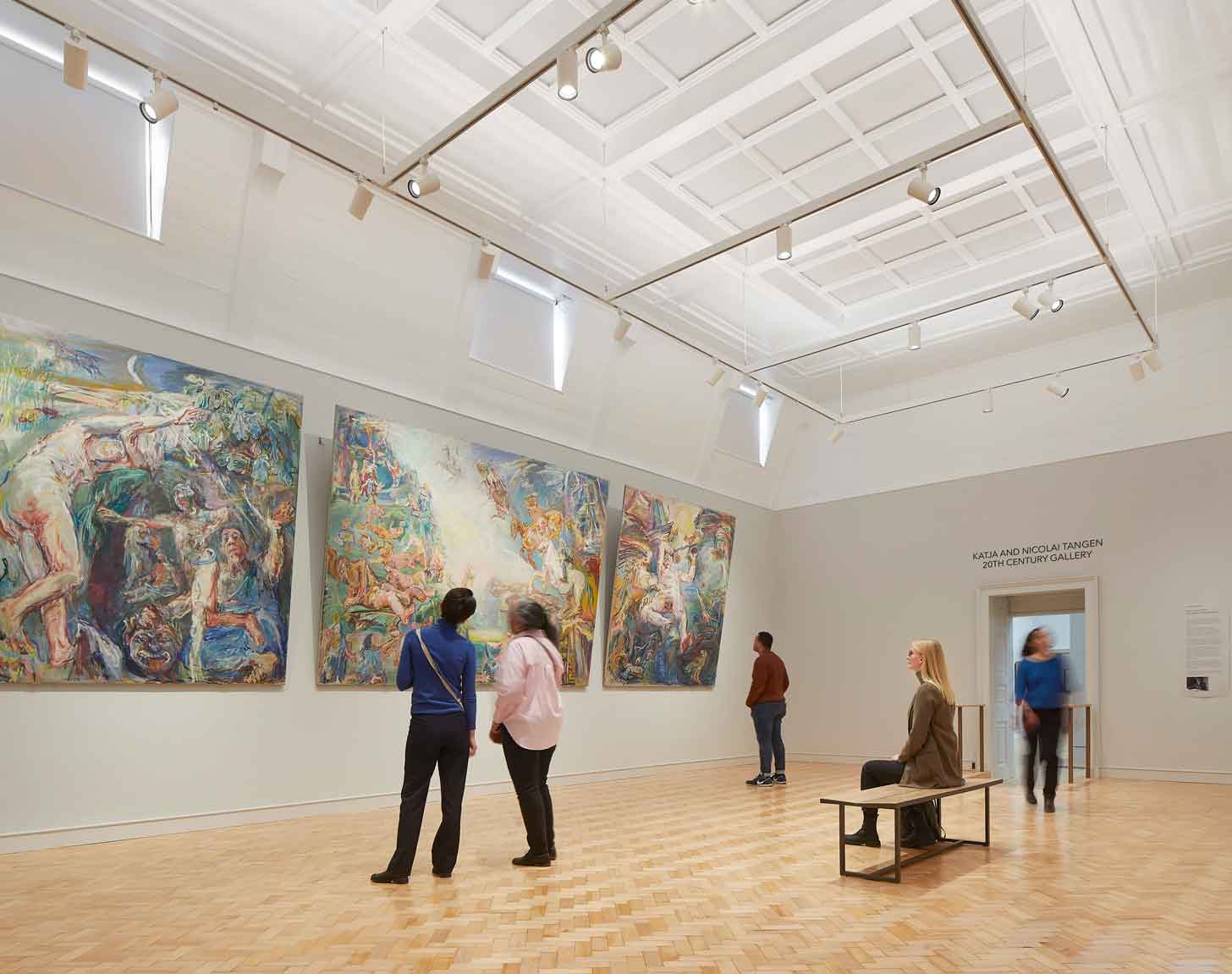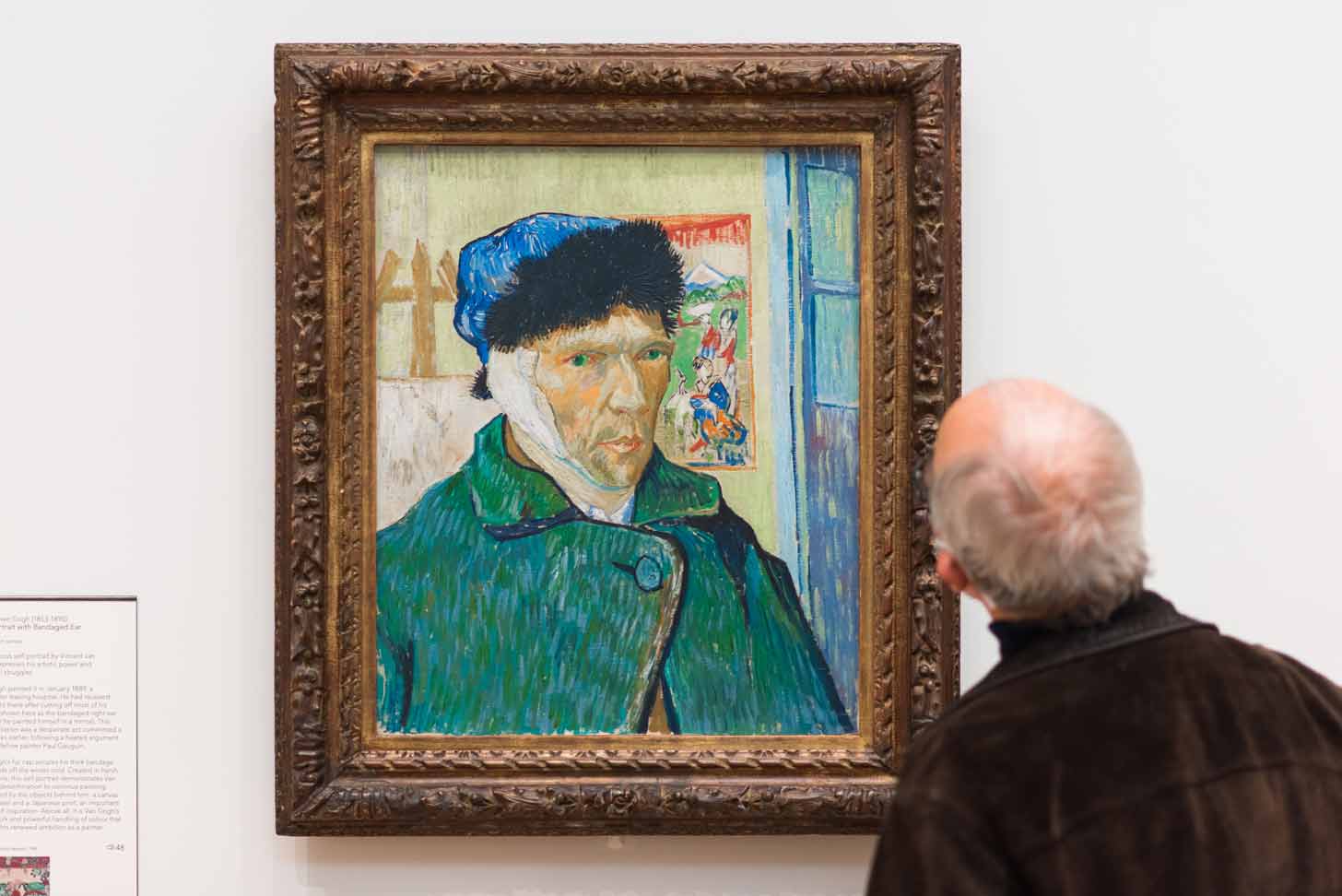New Study: Viewing Art In Galleries 'Immediately' Reduces Cortisol Levels, Boosts Health
A new study out of King’s College London is giving people more of a reason than ever to plan a museum date.
Researchers from the university’s Institute of Psychiatry, Psychology & Neuroscience worked with the Art Fund and Psychiatry Research Trust to study the physiological responses of individuals while they viewed masterpieces by world-renowned artists.
Half of the participants, which included 50 volunteers, aged 18 to 40, viewed pieces by Manet, Van Gogh, and Gauguin in The Courtauld Gallery in London. The control group, on the other hand, looked at reproductions of the same artworks in a non-gallery environment.
All of the participants’ heart rate variability and skin temperatures were measured with sensors throughout the 20-minute art-viewing sessions, and saliva samples were also taken before and after viewing.

What the researchers found proves long-held anecdotal beliefs about the power of art.
“Our unique and original study provides compelling evidence that viewing art in a gallery is ‘good for you’ and helps to further our understanding of its fundamental benefits,” Dr. Tony Woods, the study’s senior author, said.
“In essence, art doesn’t just move us emotionally — it calms the body too.”
More specifically, cortisol levels — a key stress hormone in the human body — fell by an average of 22% in the gallery group, compared to just 8% in the control group.
The participants viewing original art in the gallery also had more dynamic heart activity, which signals that art engages the body both through arousal and stress regulation.

Another key finding was that pro-inflammatory proteins IL-6 and TNF-alpha also dropped by 30% and 28% respectively for those viewing art in galleries, with no observable changes for the control group.
“Stress hormones and inflammatory markers like cortisol, IL-6 and TNF-alpha are linked to a wide range of health problems, from heart disease and diabetes to anxiety and depression,” Woods explained.
“The fact that viewing original art lowered these markers suggests that cultural experiences may play a real role in protecting both mind and body.”
The study also found that art engages the immune system, the nervous system, and the endocrine system, which is responsible for releasing hormones — making a gallery visit a near full-body workout.
“From a scientific perspective, the most exciting outtake is that art had a positive impact on three different body systems — the immune, endocrine and autonomic systems — at the same time,” Woods said.
“This is a unique finding and something we were genuinely surprised to see.”

Other previous studies have linked regular gallery visits to long-term wellbeing, the Art Fund shared in a press release, but this study is the first to “capture real-time physiological benefits,” which demonstrates an immediate positive impact.
“This study proves for the first time what we've long felt at Art Fund — that art really is good for you. What’s particularly exciting is that the findings show these benefits are universal — they can be experienced by anyone,” Jenny Waldman, the director of Art Fund, said.
“We want to encourage everyone to make time to visit their local museum or gallery … experience these powerful effects for themselves, and discover just how good art can make you feel.”
You may also like: 75% of people more likely to visit nature if ordered by a doctor, finds new 'park prescribing' study
Header image © Jim Winslet for The Courtauld Gallery






Please be good and do not spam. Thank you.